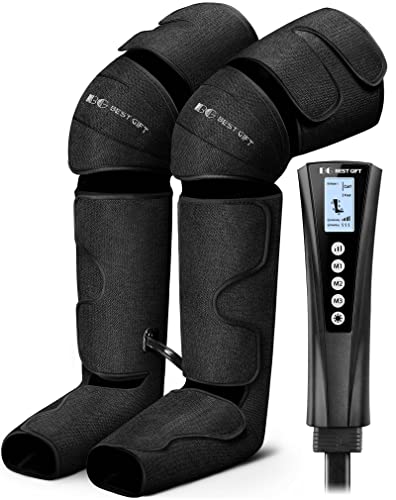A massage practitioner provides hands-on therapeutic treatment to clients using various techniques. They identify clients’ needs and use their skills to promote relaxation and alleviate pain and tension.
Are you considering a career as a massage practitioner? The role involves providing therapeutic massages to clients with the aim of promoting relaxation, reducing stress, and alleviating muscle tension and pain. As a practitioner, you will assess clients’ conditions, customize treatment plans, and use various massage techniques to address specific needs.
Additionally, you may provide advice on post-massage self-care and offer guidance on lifestyle changes to support overall well-being. The profession requires strong communication and interpersonal skills, as well as a deep understanding of anatomy and physiology. If you have a passion for helping others and a keen interest in holistic wellness, a career as a massage practitioner could be a fulfilling and rewarding choice.

Credit: vriaroma.com
Understanding The Role
A massage practitioner plays a crucial role in promoting health and well-being through the application of manual techniques to manipulate soft tissues in the body. This profession involves not only the physical act of providing massages but also requires a deep understanding of ethics, professionalism, and continuous skill development.
Skills And Training
A massage practitioner needs to possess a combination of technical skills and personal attributes to be effective in their role. These include proficiency in various massage techniques such as Swedish, deep tissue, and sports massage, as well as the ability to assess clients’ conditions and customize treatments accordingly. Moreover, they should have strong communication skills to effectively interact with clients and understand their needs.
Ethics And Professionalism
Adhering to ethical standards and maintaining professionalism is essential for a massage practitioner. This includes respecting clients’ privacy, ensuring informed consent before treatment, maintaining confidentiality, maintaining proper hygiene and cleanliness in the workplace, and being transparent about the services offered and their potential benefits and risks.
Benefits Of Massage Therapy
Massage therapy offers numerous benefits for both physical and mental well-being. By using a variety of techniques, a skilled massage practitioner helps alleviate muscle tension, promote relaxation, improve circulation, reduce stress and anxiety, and enhance overall health and wellness. Regular massages can play a vital role in maintaining a healthy body and mind.
Benefits of Massage Therapy Massage therapy offers a multitude of benefits that encompass both physical and mental well-being. Here, we’ll delve into the various aspects of how massage can improve your overall health and wellness. Physical Health Massage therapy has numerous physical health benefits, including improved circulation, reduced muscle tension, and enhanced flexibility. By targeting specific areas of the body, massages can help alleviate muscle pain and reduce the likelihood of muscular injuries. Moreover, regular massages can contribute to better posture and alignment, minimizing the risk of chronic physical conditions. Mental Wellness In terms of mental wellness, massage therapy offers significant relaxation and stress relief, promoting a sense of overall tranquility. Massages are known to stimulate the release of endorphins, the body’s natural mood enhancers, which can help combat feelings of anxiety and depression. Furthermore, the calming environment and soothing touch of a massage practitioner can lead to enhanced mental clarity and focus. Stress Reduction Massage therapy is especially effective in reducing stress levels. The therapeutic touch of a massage practitioner can trigger the body’s relaxation response, lowering cortisol levels and inducing a state of deep relaxation. This, in turn, can contribute to improved sleep quality, reduced muscular tension, and a greater sense of overall well-being.Client Assessment And Treatment Planning
Client assessment and treatment planning are integral to the role of a massage practitioner. By conducting a thorough assessment, practitioners can gain insight into their clients’ needs and tailor their treatment accordingly. This process involves gathering information about the client’s health history, identifying their specific needs, and creating a treatment plan that meets those needs effectively.
Health History
Obtaining a comprehensive health history is a vital step in the client assessment process. By collecting relevant information, such as previous injuries, medical conditions, and medications, the practitioner can assess any potential contraindications or precautions for the massage session. This allows them to adapt their treatment approach to ensure the client’s safety and wellbeing.
Identifying Client Needs
Once the health history has been gathered, the practitioner must identify the specific needs of the client. This involves asking targeted questions and listening attentively to the client’s concerns. By understanding their goals and expectations, the practitioner can determine which massage techniques and modalities will be most beneficial for addressing their unique needs. Additionally, the practitioner may observe the client’s posture and body language to gain further insight into areas that require attention.
Tailoring Treatment
After collecting the necessary information and understanding the client’s needs, the massage practitioner can begin tailoring the treatment plan accordingly. This involves selecting the appropriate techniques, adjusting the pressure, and addressing specific areas of tension or discomfort. By customizing the treatment to suit the client’s individual requirements, the practitioner can provide a personalized and effective massage experience.
The role of a massage practitioner in client assessment and treatment planning is crucial for ensuring the best possible outcomes for clients. By gathering a thorough health history, identifying their needs, and customizing the treatment plan, practitioners can deliver targeted and effective massages that promote relaxation, pain relief, and overall wellbeing.
Massage Techniques And Modalities
Massage practitioners utilize a variety of techniques and modalities to address different wellness needs. These specialized methods cater to specific conditions and preferences.
Swedish Massage
Swedish Massage is a gentle form of massage that uses long strokes, kneading, and circular movements to promote relaxation and ease muscle tension.
Deep Tissue Massage
Deep Tissue Massage targets deeper layers of muscle and connective tissue to release chronic tension and knots, helping to improve range of motion and reduce pain.
Sports Massage
Sports Massage focuses on areas of the body that are overused and stressed due to physical activity. It helps athletes recover from injuries and enhance performance.
Maintaining Client Relationships
The role of a massage practitioner in maintaining client relationships is crucial for ensuring customer loyalty and satisfaction. Effective communication skills and a commitment to continued education and growth are essential aspects that contribute to establishing strong connections with clients.
Communication Skills
Communication skills are paramount for a massage practitioner to understand the needs and preferences of clients. Active listening and clear verbal communication help in building trust and fostering a comfortable environment during sessions.
Continued Education And Growth
Continued education allows massage practitioners to enhance their skills and stay updated with the latest techniques and trends in the industry. Investing in professional development demonstrates a commitment to providing quality services to clients.

Credit: www.clinikally.com

Credit: www.grandeprairiephysiotherapy.com
Frequently Asked Questions Of What Is The Role Of A Massage Practitioner
What Are The Roles And Responsibilities Of A Massage Therapist?
A massage therapist provides massage techniques to relieve pain, improve circulation, and promote relaxation. They assess clients’ needs, create treatment plans, and offer guidance on self-care. Therapists also maintain records, uphold professional standards, and ensure a safe and comfortable environment for clients.
What Is The Difference Between A Massage Therapist And A Practitioner?
A massage therapist primarily focuses on providing massage treatments, while a practitioner may offer various holistic therapies and may not solely focus on massage. Massage therapists specialize in massage techniques, while practitioners have a broader range of holistic healing modalities.
What Is The Job Description Of A Massage Specialist?
Massage specialists provide therapeutic massages to clients, addressing their specific needs and promoting relaxation and well-being. They assess clients’ condition, create personalized treatment plans, and use various techniques to relieve muscle tension, reduce stress, and enhance circulation. They may work in spas, wellness centers, or have their own practice.
What Is The Main Function Of A Massage Therapist?
A massage therapist’s main function is to provide therapeutic massages to alleviate pain, reduce stress, and promote relaxation.
Conclusion
The role of a massage practitioner is crucial in promoting overall health and wellness. By providing targeted techniques and therapies, they help alleviate stress, reduce muscle tension, and improve circulation. Their expertise extends to understanding body mechanics, assessing individual needs, and designing personalized treatment plans.
With their compassionate touch, massage practitioners play an essential role in enhancing physical and emotional well-being. Whether it’s relieving chronic pain or enhancing relaxation, their healing hands leave a lasting impact on their clients’ lives.



